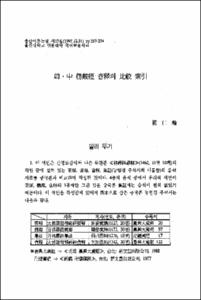3차원 지시 동작 인식을 위한 휴먼인터페이스
- Alternative Title
- Human Interface for Human Pointing Gesture Recognition
- Abstract
- 본 논문에서는, 사용자가 자신이 하는 공간지시를 시각에 기초하여 인식하여 3차원 컴퓨터 그래픽스 세계에 있는 대상체를 조작하는 휴먼인터페이스 시스템을 소개한다. 시스템은 공간기준의 공간기준계와 사용자의 몸에 고정된 사용자중심계에 대하여 손의 동작을 인식한다. 후자의 경우에는, 자신의 몸을 위치를 바꾸더라도 사용자가 앞으로 가리키면 대상체를 앞으로 움직일 수 있도록 한다. 더욱이, 액티브 카메라 시스템으로 사용자를 추적하기 때문에 사용자가 카메라의 화각을 의식하지 않아도 된다. 그리고, 아무런 카메라의 보정을 하지 않아도 된다. 이러한 특징을 갖춘 시스템을 다중 영상의 어파인 불변량 이론에 기초 하여 구현을 하였다. 이를 통해 영상알고리즘과 시스템을 실험해 보았다. 실제 사용 실험을 통하여, 본 시스템의 효용성을 밝혔다.
In this paper, a vision-based human interface system which enables a user to move a target object in a 3-dimensional computer graphics world by moving his hand is presented. The system can interpret hand motions both in a frame fixed to the world and in a frame attached to the user. If the latter is chosen, the user can move the object forward by moving his hand forward even if he has changed his body position. In addition, the user does not have to keep in mind that his hand is in the camera field of view. The active camera system tracks the user to keep him in its field of view. Moreover, the system does not need any camera calibration. The key for the realization of the system with such features is vision algorithms based on the multiple view affine invariance theory. An experimental system as well as the vision algorithms are demonstrated. Human operation experiments show the usefulness of the system.
In this paper, a vision-based human interface system which enables a user to move a target object in a 3-dimensional computer graphics world by moving his hand is presented. The system can interpret hand motions both in a frame fixed to the world and in a frame attached to the user. If the latter is chosen, the user can move the object forward by moving his hand forward even if he has changed his body position. In addition, the user does not have to keep in mind that his hand is in the camera field of view. The active camera system tracks the user to keep him in its field of view. Moreover, the system does not need any camera calibration. The key for the realization of the system with such features is vision algorithms based on the multiple view affine invariance theory. An experimental system as well as the vision algorithms are demonstrated. Human operation experiments show the usefulness of the system.
- Issued Date
- 1999
- Type
- Research Laboratory
- Alternative Author(s)
- Jo, Kang-Hyun
- Publisher
- 공학연구논문집
- Language
- kor
- Rights
- 울산대학교 저작물은 저작권에 의해 보호받습니다.
- Citation Volume
- 30
- Citation Number
- 1
- Citation Start Page
- 265
- Citation End Page
- 273
- Appears in Collections:
- Research Laboratory > Engineering Research
- 파일 목록
-
-
Download
 000002025054.pdf
기타 데이터 / 1.04 MB / Adobe PDF
000002025054.pdf
기타 데이터 / 1.04 MB / Adobe PDF
-
Items in Repository are protected by copyright, with all rights reserved, unless otherwise indicated.